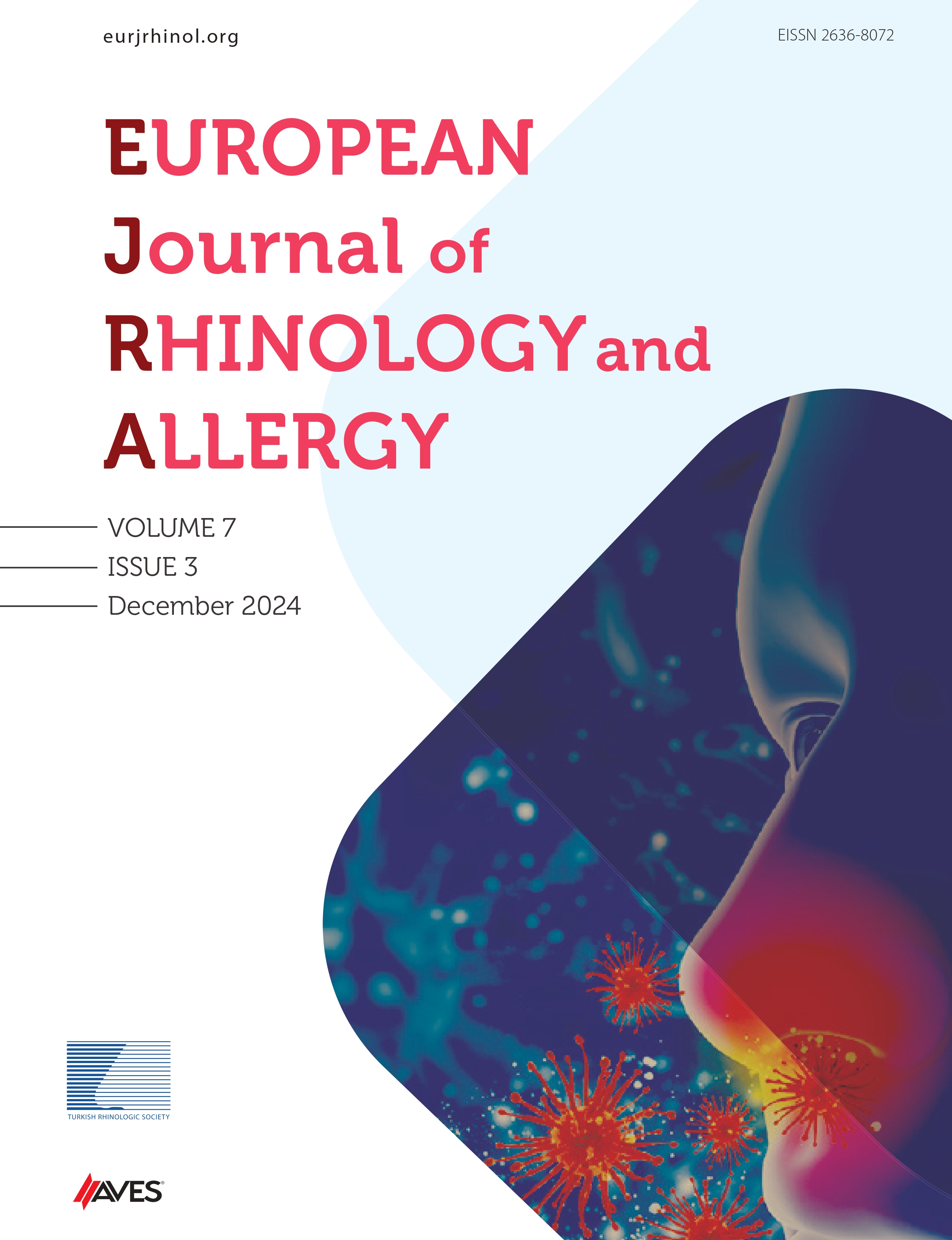Abstract
Objective: Inverted papilloma is a benign mass that usually originates from the sinonasal region in unilateral polypoid appearance. There is no significant factor in etiology, but the recent studies showing that it is related to human papillomavirus (HPV). The aim of the present study was to investigate the relationship between inverted papilloma and HPV. At the same time, the localization, stage, and hyperostosis findings of the tumor were evaluated.
Material and Methods: A total of 24 patients who underwent surgery for intranasal mass at the Adnan Menderes University Medical Faculty Department of Otorhinolaryngology-Head and Neck Surgery between 2013 and 2016 and whose pathology specimen were inverted papilloma evaluated retrospectively. In these patients, HPV positivity that was previously studied by the DNA polymerase chain reaction (PCR) method was noted and paranasal sinus computed tomography (PNS CT) imaging was evaluated.
Results: CT evaluation revealed hyperostosis in 14 (58%) patients, but not in 10 (42%) patients. All patients were diagnosed with HPV by molecular DNA PCR method. None of the patients had HPV positivity.
Conclusion: While inverted papilloma is radiologically evaluated by PNS CT, focal hyperostosis foci are important for detection of the origin of the tumor and surgical planning. More extensive studies are needed to demonstrate the effect of HPV in the process of inverted papilloma formation.
Cite this article as: Akar YC, Yıldırım FN, Kaçar Döger F, Başak HS. Inverted Papilloma: Our Clinical Experiences. Eur J Rhinol Allergy 2018; 1: 67-9.

.png)

.png)